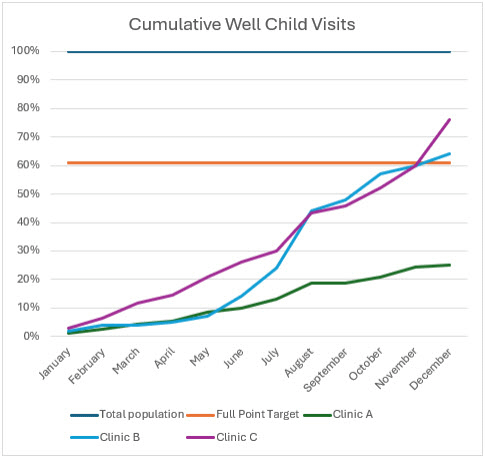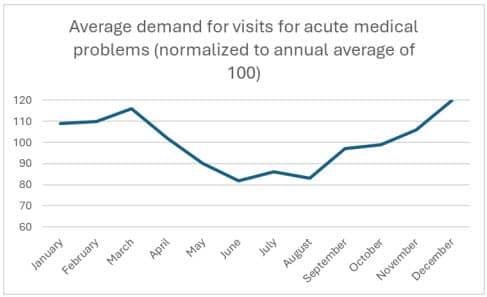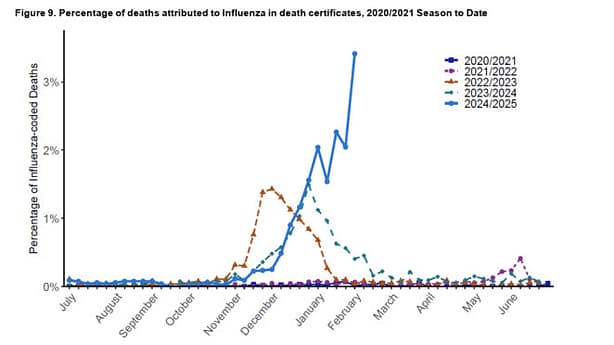By Robert L. Moore, MD, MPH, MBA, Chief Medical Officer
“It is the first responsibility of every citizen to question authority.”
– Benjamin Franklin
The October in-person convening of the California Medical Association (CMA) brought two major categories of recommendations to the House of Delegates (HOD) for discussion and debate.
The first category was a series of recommendations responding to the current threats to public health, access to health care, and interference with the delivery of health care to patients. The greatest debate among these was the degree to which the CMA should advocate for immigration policies, which indirectly affect the health status and mental health of the patients they serve. Led by amendments from the student and resident caucus, with moving testimony from many physicians – some of whom were immigrants – the final resolutions contained more specific language on immigration policy changes for which the CMA should advocate and referred these recommendations to the American Medical Association (AMA) to take national action.
The second category of action was a series of recommended changes to the CMA bylaws, which returned more deliberative responsibility to the CMA HOD while maintaining some regional medical society responsibilities for the appointment of national delegates.
In the last 30 years, the CMA has mirrored many state and national legislative bodies in changing rules to decrease the time and effort taken for deliberation and granting more authority for decision[1]making to a more powerful executive and/or legislative leadership.
For the CMA, this meant shortening the annual HOD meeting from five days to two, eliminating the reference committees deliberating on resolutions before sending them to the HOD, and moving approval of resolutions from the HOD to the Board of Trustees. CMA made these changes 20 years ago to make the process more efficient and less time-consuming for physician leaders. The consequence was that a very small group of physician leaders (the Board of Trustees) did the majority of the deliberating and then customized the recommendations as they saw fit. This resulted in many neutralized resolutions being submitted to the board with milder statements of principles, rather than resolutions that had previously come from the raucous democratic body of the HOD; the CMA Board of Trustees amended these resolutions to be more palatable and less controversial.
After a two-year process of membership engagement by the CMA Governance Reform Technical Advisory Committee (GTAC) – a sort of CMA Constitution convention – a series of bylaw changes were debated and ultimately passed by the HOD. These changes will create a policy review process in between the old way (five-day HOD meeting with reference committees and every resolution debated) and the more recent way (all resolutions go to the Board of Trustees, with one or two major topics of discussion / collections of related resolutions brought to a two-day HOD). Going forward, resolutions submitted year-round will be sorted for consideration by the Board of Trustees or the HOD, with the latter meeting twice per year.
Unrelated to the GTAC recommendations, the Board of Trustees submitted a request to the HOD to change the way the CMA delegates to the AMA were selected. These changes to bylaws would remove regional selection of a portion of AMA delegates, allowing the Board of Trustees to have final say in selecting all delegates and filling all vacancies. After spirited debate with testimony noting the importance of democracy for promoting productive dissent, inclusiveness of minority viewpoints, and preventing centralization of power, the HOD voted down these proposed changes by a nearly two[1]thirds vote. Despite the dissent, the HOD discussion remained respectful and appreciative of those who proposed the unadopted change.
In the face of vigorous and passionate deliberation, it was inspiring to witness the level of respect shown among colleagues who hold different viewpoints expressed toward each other. The discourse reminded me that for a democratic body to thrive, it needs to be engaged and reflective; it needs to debate differences respectfully, drawing upon logic and principles. While many of us may disagree with some decisions of our leaders in organized medicine, the organizations themselves are worthy of our pride and membership.



 y change and implement local initiatives to meet the maternity care needs of rural communities. The stakeholders include:
y change and implement local initiatives to meet the maternity care needs of rural communities. The stakeholders include:
